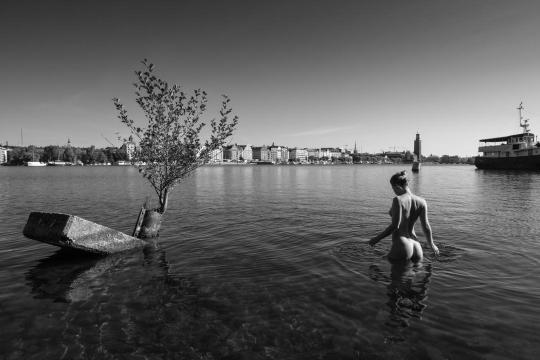#Knut Koivisto
Text
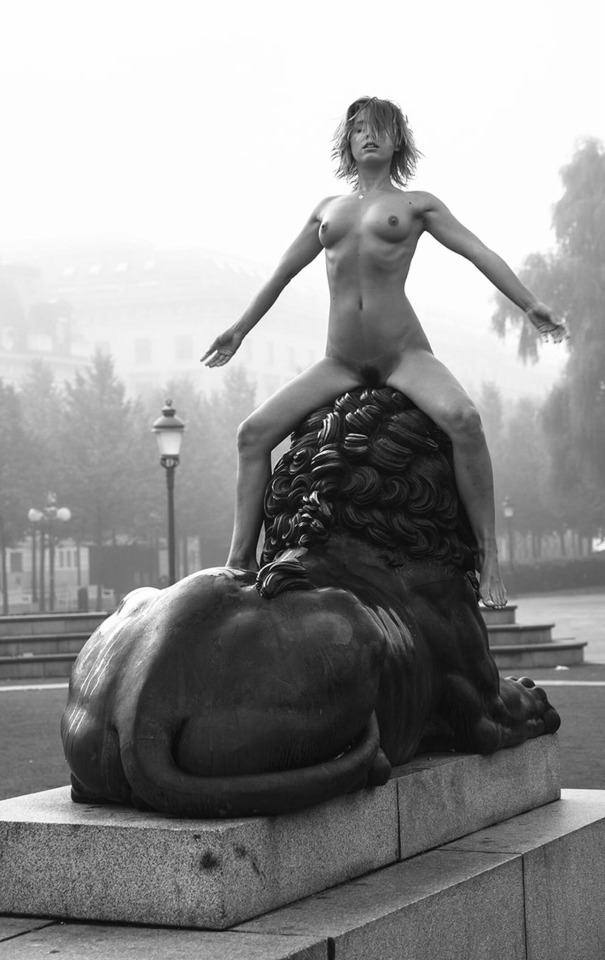
Marisa Papen nude In the streets of Stockholm by Knut Koivisto
1K notes
·
View notes
Text
Top 10 Must-See Mystery Thrillers That Will Keep You Guessing

Mystery thriller movies have always been a popular genre among moviegoers. The combination of suspense, intrigue, and unexpected plot twists keeps audiences on the edge of their seats until the very end. Whether it's a murder mystery, a psychological thriller, or a conspiracy theory, these movies leave us guessing until the final reveal. In this article, we will delve deeper into the world of mystery thrillers and recommend the top movies in this genre.
Mystery thriller movies often involve a protagonist who must unravel a complex web of clues to solve a mystery. The audience is also encouraged to play detective along with the protagonist and try to piece together the clues to solve the mystery. The best mystery thrillers keep the audience guessing until the very end and often feature unexpected plot twists that leave us reeling.
One of the greatest examples of this genre is the classic movie, "Psycho" (1960). Directed by Alfred Hitchcock, the movie follows a woman who checks into a motel run by a disturbed young man. What follows is a suspenseful and horrifying tale that has become a landmark in cinema history.
Creator: Knut Koivisto
Another great example of the mystery thriller genre is "Se7en" (1995). Directed by David Fincher, the movie follows two detectives as they hunt down a serial killer who bases his murders on the seven deadly sins. The movie's climax is one of the most shocking in movie history, and the twist ending is still talked about to this day.
Other notable movies in this genre include "The Silence of the Lambs" (1991), "Gone Girl" (2014), and "Shutter Island" (2010). Each of these movies offers a unique take on the mystery thriller genre and is sure to keep audiences engaged from start to finish.
Memento
Now, without further ado, here are our top mystery thriller movies of all time:
- "Memento" (2000) - Directed by Christopher Nolan, this movie follows a man suffering from short-term memory loss as he tries to solve the mystery of his wife's murder.
- "The Usual Suspects" (1995) - Directed by Bryan Singer, the movie follows a group of criminals who are brought together for a heist. But things aren't what they seem, and the movie's twist ending will leave you reeling.
- "Mulholland Drive" (2001) - Directed by David Lynch, this movie follows an aspiring actress as she tries to make it in Hollywood. But things take a dark turn as she becomes embroiled in a mystery involving a car crash and a mysterious woman.
- "Fight Club" (1999) - Directed by David Fincher, this movie follows an insomniac office worker who creates a "fight club" with a charismatic soap salesman. But as the club grows, things take a sinister turn.
- "The Prestige" (2006) - Directed by Christopher Nolan, this movie follows two magicians as they compete to create the ultimate illusion. But their rivalry turns deadly, and the movie's twist ending will leave you stunned.
- "Zodiac" (2007) - Directed by David Fincher, the movie follows the hunt for the notorious Zodiac Killer who terrorized San Francisco in the 1960s and 1970s.
- "Prisoners" (2013) - Directed by Denis Villeneuve, this movie follows a man who takes matters into his own hands when his daughter goes missing. But as he digs deeper into the mystery, he uncovers dark secrets that threaten to destroy him.
- "The Girl with the Dragon Tattoo" (2011) - Directed by David Fincher, this movie follows a journalist and a computer hacker.
Se7en
In addition to those classics, there are also some newer mystery thrillers that have become instant favorites among moviegoers. One such film is "Gone Girl" (2014), based on the novel by Gillian Flynn. This movie tells the story of a man whose wife goes missing and he becomes the prime suspect in her disappearance. With twists and turns that keep the audience guessing until the very end, "Gone Girl" is a must-see for fans of the genre.
Another recent film that has garnered critical acclaim and a large following is "Knives Out" (2019), directed by Rian Johnson. This movie follows a detective investigating the death of a wealthy family's patriarch, and the family members who become suspects in the case. With an all-star cast including Daniel Craig, Chris Evans, and Jamie Lee Curtis, "Knives Out" offers a fresh take on the classic whodunit mystery.
Other notable mystery thrillers from recent years include "The Girl on the Train" (2016), "Wind River" (2017), "Searching" (2018), and "The Invisible Guest" (2016). Each of these movies offers unique twists and turns that will keep audiences on the edge of their seats.
In summary, mystery thriller movies offer an exciting and suspenseful viewing experience that leaves audiences guessing until the very end. From classic films like "Vertigo" and "Rear Window" to newer releases like "Gone Girl" and "Knives Out," there is no shortage of great movies in this genre. If you're looking for a thrilling night in, any of the films on this top 10 list are sure to satisfy.
Read the full article
1 note
·
View note
Text
Claire Foy teases a whole new look for Lisbeth Salander in 'The Girl in the Spider's Web'

Claire Foy stars in the new Steven Soderbergh psychodrama ‘Unsane.’ (Photo: Bleecker Street Media/Courtesy Everett Collection)
Lisbeth Salander typically isn’t a difficult person to pick out of a crowd. With her jet-black hair, multiple piercings, and one very prominent dragon tattoo, the central character in Stieg Larsson’s bestselling Millennium series makes an immediate impression on the page and in her cinematic appearances. Nevertheless, audiences might not immediately recognize the hacker extraordinaire when she returns to the big screen this November in The Girl in the Spider’s Web, and not just because there’s a new face in the role. According to Claire Foy, who inherited Salander’s leather wardrobe from predecessors Noomi Rapace and Rooney Mara, Lisbeth’s sense of personal style has received an upgrade — or, more accurately, a downgrade.
“It’s quite a pared-down look,” the Golden Globe-winning star of The Crown says of Salander’s makeover in the film, directed by Fede Álvarez. “The costume we’ve found for Lisbeth isn’t the same as any of the other actresses have worn, but it feels very like-minded. Her [thinking] now is, ‘I want to make sure that I’m wearing it — it’s not wearing me.'” In addition to her most familiar tattoo, Salander will show off some new ink in Spider’s Web, designs that were personally chosen by Foy in collaboration with the film’s makeup team. “I love the tattoos, because I got to help decide what I was having and where they were,” she says.

Claire Foy’s predecessors as Lisbeth Salander: Rooney Mara in David Fincher’s 2011 film and Noomi Rapace in the 2009 Swedish-language version (Photo: Baldur Bragason/Columbia Pictures/Courtesy Everett Collection; DANMARKS RADIO/DET DANSKE FILMINSTITUT/FILM I VAST Knut Koivisto/Ronald Grant Archive/Mary Evans/Everett Collection)
As Foy explains, the main motivation for Lisbeth’s stylistic evolution is her personal evolution since we originally encountered her in the novel The Girl with the Dragon Tattoo, which was previously adapted into a 2009 Swedish film and then a 2011 American remake starring Rapace and Mara respectively. (Rapace reprised the role in two sequels, and while Mara hoped to continue with the franchise, the studio had other ideas.) The fourth book in the series — and the first not written by Larsson, who died in 2004 — The Girl in the Spider’s Web finds Salander having put the events of the previous novels behind her. That is, until she’s once more drawn into a mystery by crusading journalist Mikael Blomkvist (Sverrir Gudnason), this one involving a top-secret group of hackers known as the Spider Society.
“In the first three books, you’re getting her life story, and how she frees herself from the shackles of being a ward of the state,” Foy says. “The fourth book is a different story, in a way. It’s the same character, but you’re not joining a Lisbeth who is still dealing with that part of her life. The story we tell, especially in the beginning of the film, is ‘What does she do now? What’s her purpose?’ I’m excited for people to see it; we’re not trying to make it like anything else [in the series], but we’re also not trying to make it wildly different. We’re just trying to be truthful to the story.”
In between stepping down from England’s throne following Season 2 of The Crown (when the show returns, Olivia Coleman will play an older Queen Elizabeth) and tatting up to play Lisbeth, Foy donned a hospital gown for Steven Soderbergh’s psychodrama Unsane, which is now in theaters. The Ocean’s Eleven director shot the entire film on an iPhone, although the actress found that conceit less exotic than the fact that she was able to perform the entire script in sequence, rather than out of order as most movies (and TV episodes for that matter) are filmed. “That was the first time I’ve done that, and it was amazing,” she raves. “I could play the part in real time. And Steven had so much more freedom with where he could put the camera and move it; we could do more in the time we had. That’s why the movie has an energy and pace to it that you don’t normally get.”

Visual proof that Steven Soderbergh directed ‘Unsane’ entirely on an iPhone. (Photo: Bleecker Street Media /Courtesy Everett Collection)
Acting in real time helped Foy better track the slippery sanity of her character, Sawyer Valentini, a troubled woman who inadvertently commits herself to a mental institution that, to her horror, also employs her ex-stalker (Joshua Leonard). Or does it? Sawyer’s point of view isn’t necessarily the most reliable, and the film toys with whether what we’re watching is real or a symptom of her disturbed mind. As the person playing the part, though, Foy didn’t have the luxury of debating the reality of every moment. “Whatever reality happening at that time was the reality I was in,” she says. “I couldn’t really think ahead or in the past; I had to play every moment as that moment.”
Read more from Yahoo Entertainment:
‘Isle of Dogs’ star Jason Schwartzman explains why Wes Anderson films are like a circus — and a family
No, you never saw a guest die on ‘The Dick Cavett Show’ (but it did happen)
From Bill Hader’s ‘Barry’ to Netflix’s relaunch of ‘Lost in Space’: 10 new shows to watch this spring
#news#_uuid:fe439516-5f76-3b2f-bca3-4e959b3d71bd#the girl in the dragon tattoo#_revsp:wp.yahoo.movies.us#movie:the-girl-in-the-spiders-web#movie:unsane#the girl in the spiders web#_lmsid:a0Vd000000AE7lXEAT#interviews#unsane#_author:Ethan Alter#claire foy#Lisbeth Salander#the crown
9 notes
·
View notes
Photo

Ren Hang photographié par Knut Koivisto pour Fotografiska, 2017
1 note
·
View note
Photo
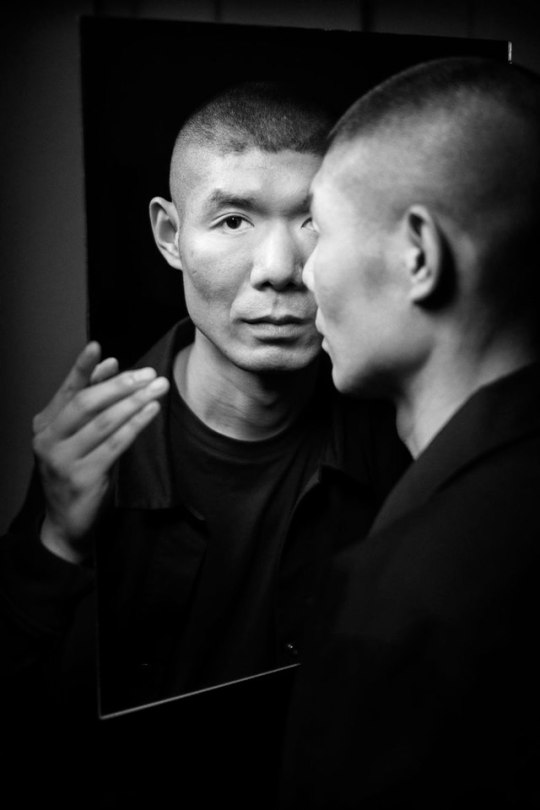
Ren Hang, photographié par Knut Koivisto pour Fotografiska, 2017
"Le photographe chinois Ren Hang, né en 1987, s’est suicidé le 24 février 2017.
Ren Hang menait depuis quelques années une réflexion sur la nudité et l’érotisme en photographiant des corps nus entremêlés, des sexes féminins et masculins, des parties intimes en plans rapprochés, l’interaction entre les corps féminins et masculins, et un monde naturel sous l’influence de la civilisation humaine. Ren Hang aimait explorer la manière dont les objets naturels s’identifient au corps, examiner les situations formelles qui émergent entre les deux, se concentrant en particulier sur l’optique complexe de camouflage en tant que monde humain et monde naturel, tandis qu’ils disparaissent l’un dans l’autre.
Il disait: "“J’aime les prendre en photo parce qu’ils me font confiance, ce qui me permet d’être plus détendu ; travailler avec des étrangers me rend nerveux.”
Sans surprise, son oeuvre irritait fortement le gouvernement chinois, qui n’hésitait pas à recourir à la censure.
Ren Hang confiait : "“Les idées politiques exprimées dans mes images n’ont rien à voir avec la Chine. C’est la politique chinoise qui veut s’introduire dans mon art. Une de mes expositions a déjà été annulée par le gouvernement chinois pour ‘suspicion de sexe’.”
Ren Hang souffrait de dépression."
Texte : Open Minded
0 notes
Photo



https://fujifilm-x.com/global/stories/personal-best-vol-12-knut-koivisto
0 notes
Photo
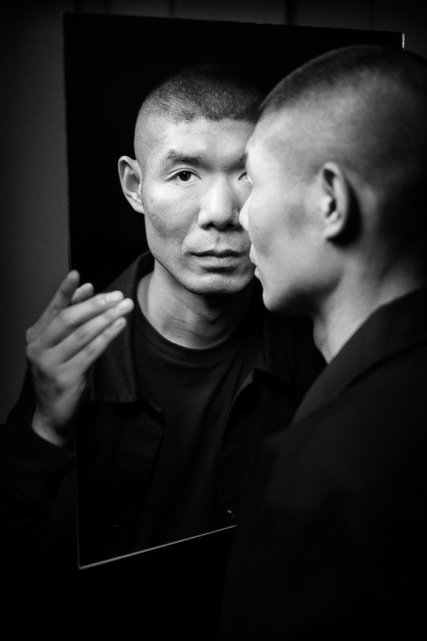
Ren Hang
ph. Knut Koivisto
https://www.nytimes.com/2017/03/03/arts/ren-hang-dead-photographer-china.html?rref=collection%2Fsectioncollection%2Fdesign&action=click&contentCollection=design®ion=stream&module=stream_unit&version=latest&contentPlacement=18&pgtype=sectionfront&_r=0
2 notes
·
View notes
Photo
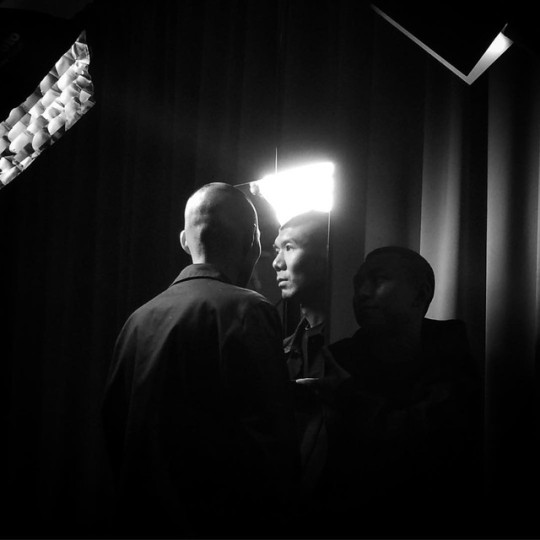
Knut Koivisto shooting Ren Hang for Fotografiska's Wall of Fame. The exhibition Human Love with Ren Hang opens @fotografiska today! @__knut__ @renhangrenhang #fotografiska (på/i Fotografiska)
0 notes
Text
Fujifilm’s GFX 50S medium format digital camera is more revolutionary than the most commonly shared images of it suggest. That is the first thought I had when I began exploring then downloading the product shots at Fujifilm UK’s image bank and I think it is only going to really sink in when more photographers than just the few manage to try one out.

The press images hinting at the GFX 50S being more than meets the eye prompted me to download them all and publish them here, below. Specifications lists like the one further down the page are well and good, but seeing is where we will understand the real nature of this camera and its accessories.
The most obvious way of looking at the GFX 50S is as a larger version of the Fujifilm X-T2, but with a medium format sensor instead of an APS-C one. And in a way, that is correct. The GFX 50S has the external form factor of a DSLR except for the fact that we know the GFX 50S – with S, we assume, standing for SLR-like –is most certainly a mirrorless camera with all that implies about its lack of mirror slap and its ability to use an electronic or a mechanical shutter.
But then dig a little deeper.
The Camera
That pentaprism-like electronic viewfinder (EVF) unit is removable and yet, without it, the GFX 50S remains perfectly functional but as something more resembling a small view camera. Instead of a ground glass, it has a high resolution rear LCD screen.
So does the X-Pro and X-T2, like a slew of other excellent contemporary mirrorless and, for that matter, DSLR, cameras, all providing a live view that is perfectly adequate for using to compose, focus and create your photographs.
Contemporary mirrorless devices push digital cameras beyond the limitations of analog cameras in ways that mean I for one can never go back.
Fujifilm’s X-Pro2, for example, might be considered three cameras in one, in analog terms. In one way it is a small view camera not unlike the 120 roll film Linhof Technika 70, one of two Linhof Technika cameras with which I learned professional photography, the other being a Linhof Super Technika 4″x5″ sheet film camera with optional roll film magazines and a case full of accessories.
Although purchasing my own Linhof was beyond reach, the lessons learned on those two amazing cameras have stayed with me for life. They intimately shaped my portrait photography style.
Even when I used other view cameras, usually field cameras, for my work as a magazine portrait photographer, I often did so with a Linhof variable format 120 roll film magazine for more shots, faster operating speed and the choice of shooting square, rectangular or panoramic aspect ratios.
While I often find myself using the monitor of my X-Pro2 and other digital cameras as if a small view camera’s ground glass, there is no substitute for the real thing. It is all about the experience on both sides of the camera.
For me, a contemplative experience of care and precision. For my subject, an experience of respect, sometimes awe, and oftentimes an hypnotic fascination with this remarkable high precision machine into whose eye I was asking them to gaze, unflinchingly.
Then consider the images of the tilting EVF along with the images of the tilting monitor, both so reminiscent of the town lens reflex cameras that provided me with lessons in another way of seeing and photographing.
The Lenses
Although I learned that on an art school Mamiyaflex C330 TLR with interchangeable lenses, I chose Rolleiflex T and Rolleiflex 2.8G cameras for my professional use, for urban documentary and portraiture. All three left me with an appreciation of square format, 1:1 aspect ratio, for those times when I wanted to draw my viewers’ attention in so clearly it was like an arrow into the centre of a bullseye.
All my cameras were secondhand until I discovered 120 roll film rangefinder cameras and 120 roll film DSLRs. I won’t bore you with a list save to say that it was with the rangefinder cameras where I most felt at home due to having discovered Leica M-Series rangefinder cameras as a teenaged press photographer way out in the sticks working it all out for myself.
The Heritage
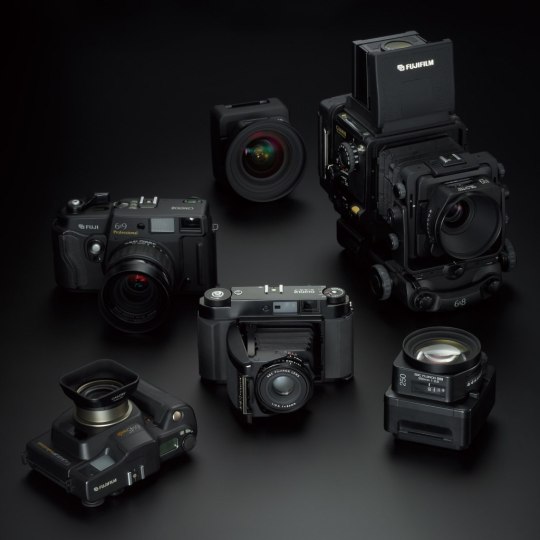
Rangefinder cameras have a special place in my heart to this day for their immersive window into the world, their sense of deep space and spatial relationships across the frame as well as forward and backwards.
After the demands of commercial work caused me to invest in 120 roll film DSLRs, while conceiving the magazine I later went on to cofound, I discovered Fujifilm’s GX680 Professional series, a remarkable creation combining the best of view cameras with the best of DSLRs, but one which regrettably, I never got to try out.
Another range of Fujifilm analog cameras that I was luckier with were its 120 rangefinder cameras that now live on in my hands in ghostly form as the X-Pro2.
When the late, great photojournalist-turned-landscape photographer Michael Reichmann favourably compared the Canon EOS D30 DSLR’s sensor to Fujifilm Provia 100F film, it was clear that digital photography had attained the ability to match the look of analog.
Fujifilm’s X-Pro 2, X-T2 and the coming X100F with their 24 MP sensors produce image quality far above that of 35mm film, rivalling if not surpassing that of low ISO 120 format film. We have so much to be grateful for.
There is just one thing I am a little peeved about, though, and that is that we have lost the wide variety of cameras we had during the analog era.
We now have remarkable image quality to the degree that images made on medium format DSLRs can surpass the resolution of 8″x10″ sheet film as Mr Reichmann demonstrated in another of his famous reviews.
But what all this testing, side-by-side comparisons, digital up against analog and so on fail to do is consider the experience of the cameras and lenses in question, on both sides of the sensor, and what that contributes to the images we make with them.
Image quality is crucial of course, and I say that as someone who commissioned photographs for 48-sheet posters during my advertising agency days and who now is contemplating a possible return to the art gallery wall.
But for me at least the experience is what reigns supreme and always will.
The Specifications
Click here to download a specifications spreadsheet PDF for the Fujifilm GFX 50S camera.
Recommended Viewing:
More GFX Challenges videos were released to go with the January 2017 announcement of the Fujifilm GFX 50S.
FUJIFILMglobal – GFX challenges with Bernd Ritschel / FUJIFILM
FUJIFILMglobal – GFX challenges with Claire Rosen / FUJIFILM
FUJIFILMglobal – GFX challenges with Jan Gonzales pt.2 / FUJIFILM
FUJIFILMglobal – GFX challenges with Jonas Dyhr Rask/ FUJIFILM
FUJIFILMglobal – GFX challenges with Knut Koivisto / FUJIFILM
FUJIFILMglobal – GFX challenges with Lito Sy / FUJIFILM
FUJIFILMglobal – GFX challenges with Sangsun Ogh / FUJIFILM
FUJIFILMglobal – GFX challenges with Seiichi Nakmura (中村成一) / FUJIFILM
FUJIFILMglobal – GFX challenges with Shiro Hagihara (萩原史郎) / FUJIFILM
FUJIFILMglobal – GFX challenges with Supalerk Narubetkraisee / FUJIFILM
FUJIFILMglobal – GFX challenges with Victoria Wright/ FUJIFILM
FUJIFILMglobal – GFX challenges with Wayne Johns / FUJIFILM
FUJIFILMglobal – FUJIFILM GFX 50S Promotional Video / FUJIFILM
Oliver Wehrli – Fujifilm GFX Challenge with Oliver Wehrli – Schweiz
Image Credits:
Header image by Carmel D. Morris.
Fujifilm’s GFX 50S: New Ways of Seeing and Shooting, More Affordable Big Sensor High IQ Fujifilm's GFX 50S medium format digital camera is more revolutionary than the most commonly shared images of it suggest.
#advertising#advertising photography#documentary#documentary photography#fine art photography#Fujifilm#Fujifilm GFX 50S#landscape photography#magazine photography#magazines#medium format#medium format sensor#photographs#photography#photojournalism#portrait photography#portraits#portraiture#poster photography#posters#product photography#products
0 notes
Text
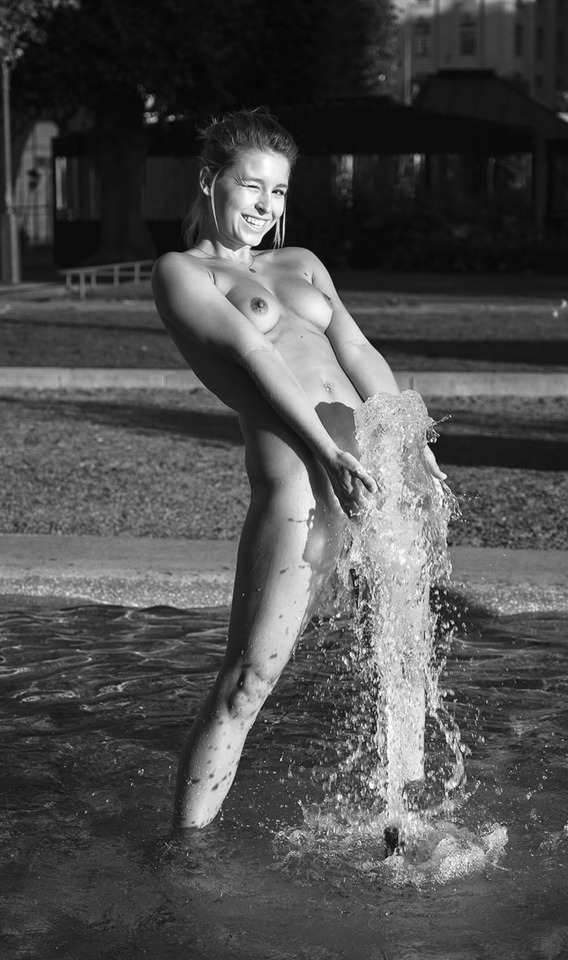
Marisa Papen nude In the streets of Stockholm by Knut Koivisto
833 notes
·
View notes
